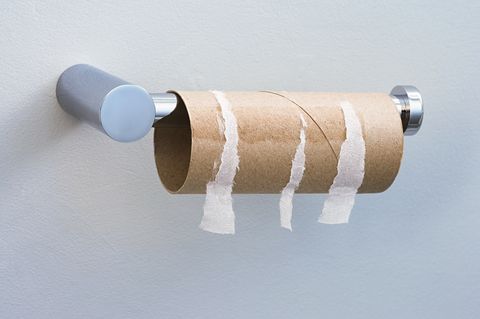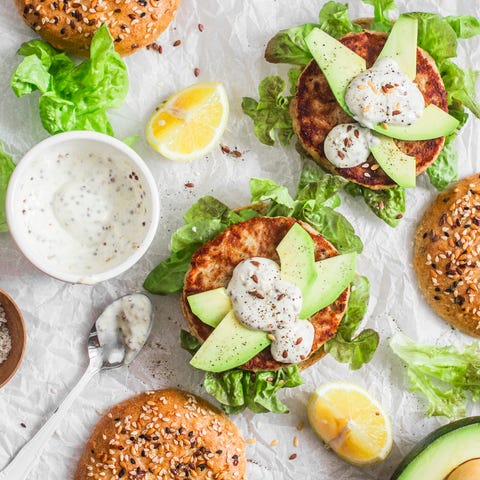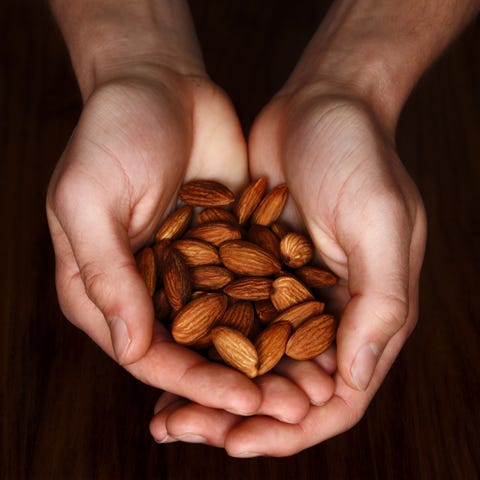
Fiber is probably the least sexy of all the nutrients.
Protein gives you superhero muscles. Carbs grant you sustained endurance. Fat switches you into ketosis, if you’re into that.
But fiber is best known for … helping you poop.
Except that fiber is good for so much more than pooping.
Yes, fiber can help regulate digestion and improve your bowel movements, but it can also help foster a vibrant, disease-defending gut bacteria microbiome.
Fiber can help blunt glucose spikes. Fiber can fill you up during a meal and cause you to feel fuller for longer after a meal. (This means less snacking on junk, which may lead to weight loss.)
Eating high-fiber foods, such as whole grains, cruciferous vegetables, and nuts, have been linked to heart health, cancer prevention, and diabetes defense.
Fiber could—and would—adopt all the kittens and puppies in the universe, if only you would let it.
So stop standing in the way of fiber by denigrating as the “the poop nutrient.” (Because you know you call it that.)

Image Source
Bestow upon fiber the sexiness it deserves.
How much fiber should you eat in a day? Well, various health institutions say that 38 grams a day for men (25 grams for women) is a good benchmark to hit. Except that most Americans only eat about half that amount.
Here’s an idea: Stop worrying about grams and start eating more fiber than you do right now. Just more.
How? These four incredibly easy ways to eat more fiber can help.
1. Stop Demonizing Carbohydrates

CarlosDavid.org
Or, rather, stop letting fad diets demonize carbs. Too many crash diet plans lump carbohydrates together and, in turn, unfairly slander good carbohydrates and the fiber they contain.
Yes, you should watch your intake of carbohydrates in the form of refined sugar. But you shouldn’t cut out fiber-rich carbs at the expense of “eating fewer carbohydrates” like many of these diets dictate.
There’s absolutely no reason to limit the amount of fiber-rich carbohydrates in your diet. Which means you can eat all the fruits and vegetables you want. Apples, pears, peaches, plums, strawberries, blueberries, raspberries, blackberries, bok choy, broccoli, green beans, spaghetti squash, yellow squash, zucchini, beets, carrots, celery, radishes, snap peas, peas, rutabagas, red peppers, yellow peppers, orange peppers, green peppers, tomatoes, potatoes, and even kale.
All the fruits and vegetables you want? Won’t that lead to excess calories and weight gain?
Buddy, you try eating all the kale or zucchini or apples you want. It’s really difficult to eat too many calories from produce. You know why?
FIBER.
2. Put an Avocado on It

OksanaKiian
Everyone loves this fruit for its heart-healthy fats—so much so that it overshadows just how much fiber it contains.
Get this: One avocado has 13 grams of fiber.
Thirteen.
One medium apple has four grams. Two slices of whole-grain bread have four grams. One cup of chopped boiled kale has three grams.
If you smash half an avocado onto a piece of whole grain toast in the morning, that’s about nine grams of fiber total. Later, if you cube that other half of an avocado and mix it with ½ cup of black beans to throw atop tacos, that’s 14 grams‚ and suddenly you’re at 23 grams of fiber for the day.
More like ah-WOW-cado.
3. Rethink “Salads”

Alexander Spatari
You should eat your greens. They contain disease-fighting antioxidants. They have numerous essential vitamins and minerals. They’re low in calories.
But if you’re looking to add fiber to your diet, you could do better than greens-based salad. Four-and-one-half cups of spinach (which is a lot of spinach, mind you), have two grams of fiber. Two cups of romaine have the same amount. Two cups of iceberg have barely 1.5 grams.
A side salad will not your fiber needs meet.
Unless that salad is bean-based. By comparison, one cup of edamame has 10 grams of fiber, as does one cup of chickpeas. Either of these, or black beans as mentioned above, can form a solid foundation for a simple salad.
Mix with a little olive oil, a hit of freshly squeezed citrus juice, salt, pepper, and maybe one additional spice of your choosing and that’s it. Fiber. Flavor. Finished.
4. Junk the Bars for Nuts

Russell Johnson / EyeEm
A Fiber One Chocolate Caramel & Pretzel Bar has six grams of fiber. You know what else it has?
Ingredients: Chicory Root Extract, Soy Protein Isolate, Erythritol, Wheat Flour, Puffed Durum Wheat, Palm Kernel and Palm Oil, Corn Syrup, Whey Protein Isolate, Vegetable Glycerin, Rice Flour, Whole Grain Oats, Canola Oil, Rice Starch, Dutch Cocoa (processed with alkali), Whole Grain Barley Flakes, Whole Wheat Flour, Maltodextrin, Soy Lecithin, Soluble Corn Fiber, Salt, Canola Oil, Sugar, Natural Flavor, Barley Malt Extract, Cellulose Gum, Baking Soda, Yeast, Stevia Leaf Extract, Color (yellow 5 & 6 lake, blue 2 lake and other color added), Vitamin E (mixed tocopherols) Added to Retain Freshness.
Two handfuls of almonds (about 44 nuts) has the same amount of fiber, plus heart-healthy fats and protein. You know what else it doesn’t have?
Ingredients: Chicory Root Extract, Soy Protein Isolate, Erythritol, Wheat Flour, Puffed Durum Wheat, Palm Kernel and Palm Oil, Corn Syrup, Whey Protein Isolate, Vegetable Glycerin, Rice Flour, Whole Grain Oats, Canola Oil, Rice Starch, Dutch Cocoa (processed with alkali), Whole Grain Barley Flakes, Whole Wheat Flour, Maltodextrin, Soy Lecithin, Soluble Corn Fiber, Salt, Canola Oil, Sugar, Natural Flavor, Barley Malt Extract, Cellulose Gum, Baking Soda, Yeast, Stevia Leaf Extract, Color (yellow 5 & 6 lake, blue 2 lake and other color added), Vitamin E (mixed tocopherols) Added to Retain Freshness.
Source: Read Full Article